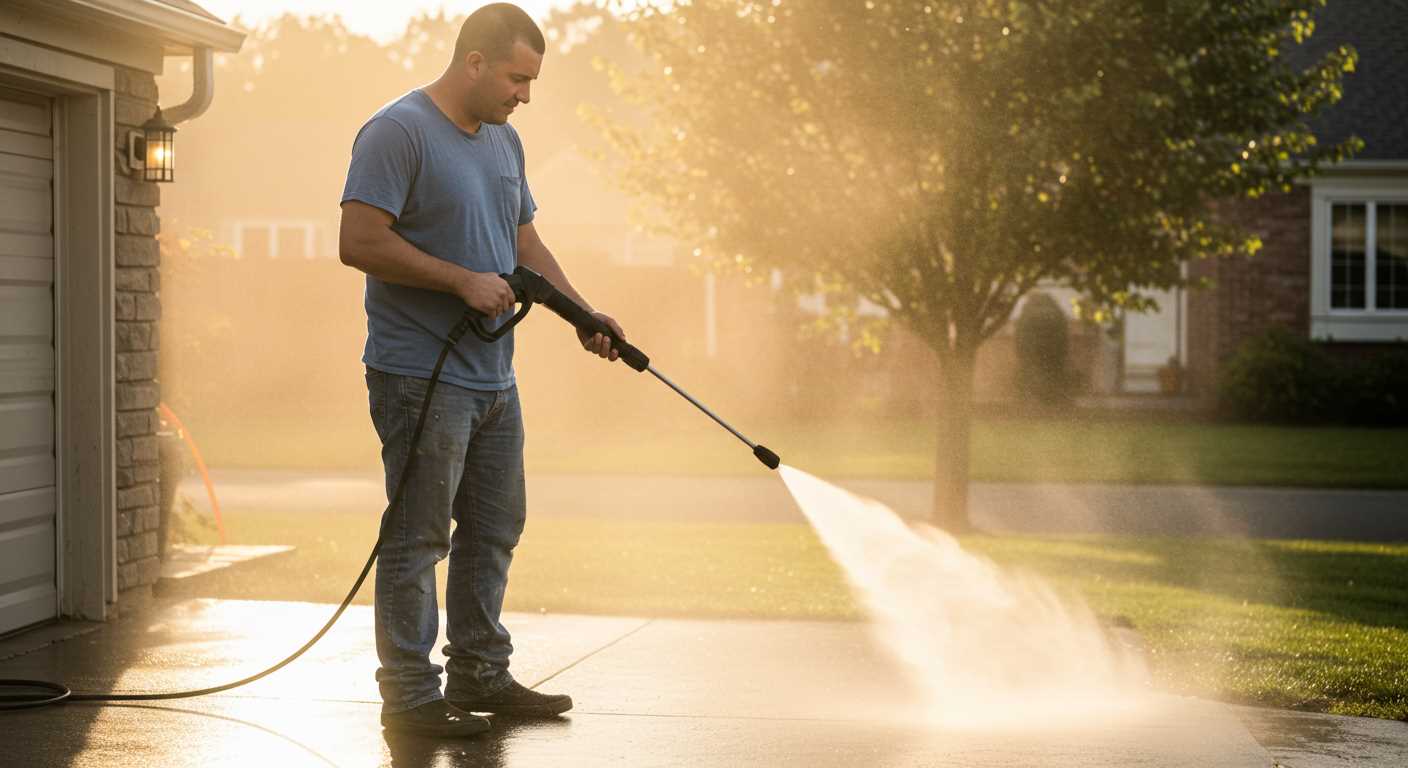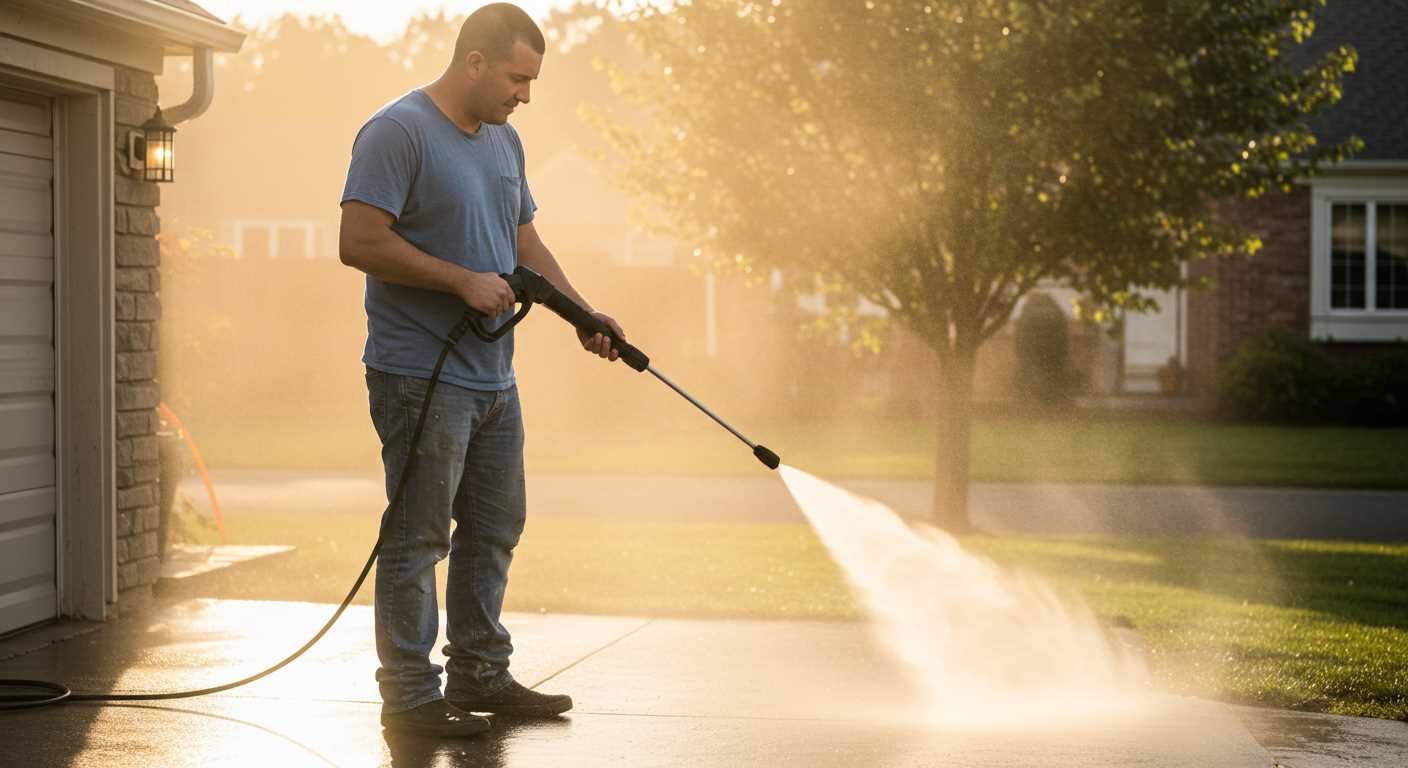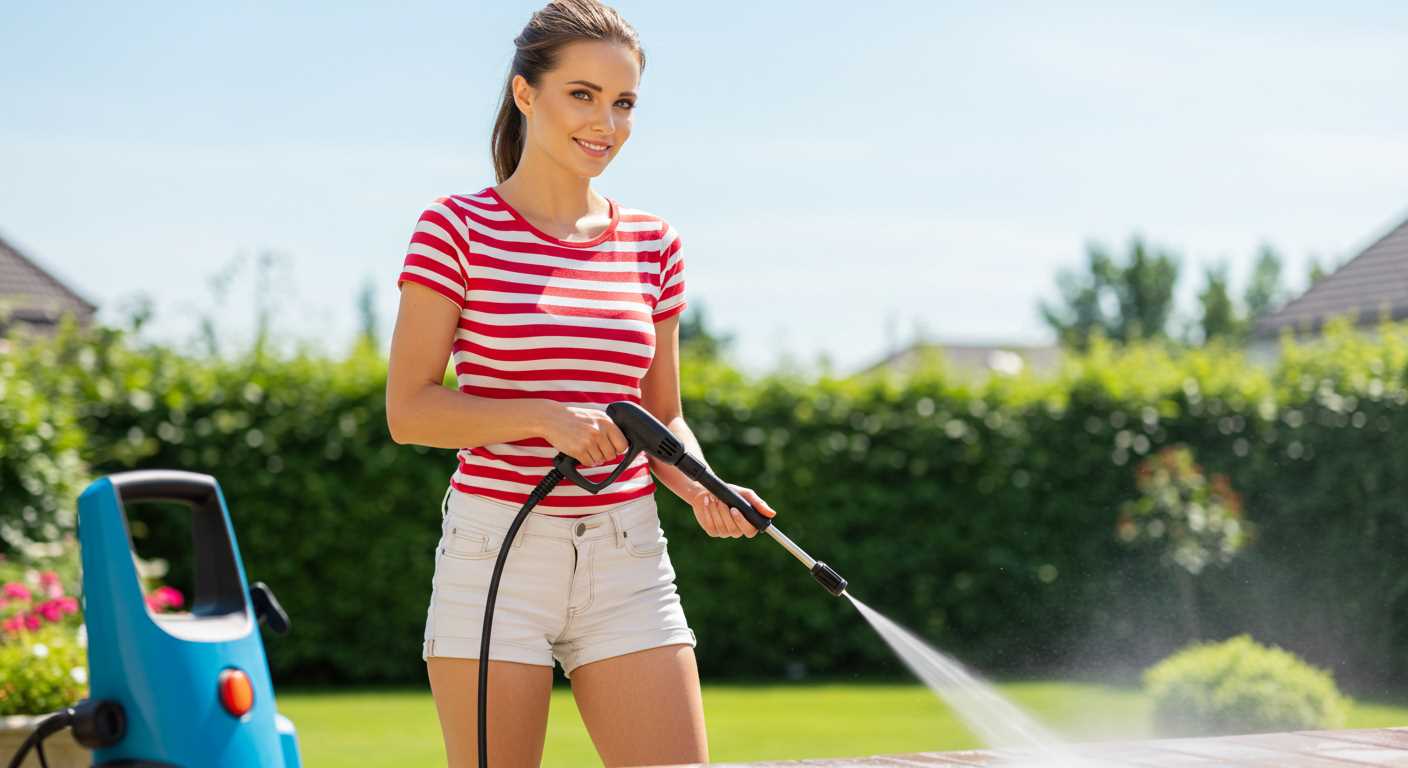




Choosing the right cleaning device can feel overwhelming with so many options available. My advice? Focus on the power source. Electric models are quieter and easier to use, making them ideal for smaller tasks like washing cars or patio furniture. On the other hand, gas-powered versions deliver higher pressure, perfect for tougher jobs like stripping paint or cleaning driveways.
Another significant factor is the pressure rating, measured in PSI (pounds per square inch). For light cleaning, 1300 to 1900 PSI suffices, while more demanding tasks often require 2000 PSI or more. I once worked on a project where a client underestimated the pressure needed for their stubborn driveway stains. A quick upgrade to a higher PSI model transformed their cleaning experience dramatically.
Don’t overlook the flow rate, indicated in GPM (gallons per minute). A higher GPM means faster cleaning. I remember a time when I opted for a model with a lower flow rate, and it extended my workday significantly. A balance between PSI and GPM will ensure efficiency without compromising performance.
Consider the types of nozzles included. Different spray patterns are essential for various surfaces. A narrow jet is fantastic for tough grime, while a wider fan is gentler for delicate areas. I’ve often switched between nozzles mid-task to optimise results, and it’s made a world of difference.
Lastly, evaluate the weight and manoeuvrability of the unit. A lighter model is easier to handle, especially if you need to transport it frequently. During my years in the field, I’ve encountered models that seemed great on paper but were cumbersome in practice. Choosing a well-balanced design can save you from unnecessary fatigue.
Factors to Keep in Mind While Choosing a High-Pressure Cleaning System
First off, assess the power source. Electric models are quieter, lighter, and easier to maintain, making them perfect for small jobs like cleaning patios or vehicles. Gas-powered units, on the other hand, provide more power and mobility, ideal for larger tasks such as stripping paint or cleaning driveways. I’ve seen both types in action, and the choice really hinges on your intended use.
Next, focus on the pressure rating. Measured in PSI (pounds per square inch), this figure indicates the force of the water. For household tasks, a machine with 1300 to 2000 PSI is usually adequate. For heavy-duty jobs, look for at least 3000 PSI. I recall a job where a friend’s 1500 PSI unit struggled with stubborn grime, while my 3200 PSI model tackled it effortlessly.
Don’t overlook the GPM (gallons per minute) either. This measurement reflects the flow rate of water. A higher GPM means quicker cleaning, as it reduces the time you spend scrubbing. A balance between PSI and GPM is crucial. For instance, a unit with 2000 PSI and 1.5 GPM can be more efficient than one with 3000 PSI but only 1.2 GPM.
Consider the nozzle options available. Many models come with interchangeable nozzles that adjust the spray pattern. A wider angle is perfect for delicate surfaces, while a narrow angle can blast away tough stains. I’ve found that having a variety of nozzles makes all the difference in achieving the right cleaning power for different surfaces.
Look into the weight and portability of the unit. Heavier machines can be cumbersome, especially if you have to move them around a lot. Some models come with wheels or a cart design, making transport easier. I’ve faced the challenge of lugging a bulky model up and down stairs, which taught me to prioritise portability.
Lastly, check for additional features like onboard storage for accessories, adjustable wands, and detergent tanks. These elements can enhance usability and convenience. I once used a model with a built-in detergent tank, which saved me time and effort compared to having to mix and apply cleaning solutions separately.
In summary, each aspect plays a significant role in ensuring you select the right equipment for your needs. Take your time, assess your requirements, and choose wisely.
Determine Your Cleaning Needs
Assess the specific tasks you intend to tackle with your cleaning device. For instance, if you’re focused on maintaining your vehicle, a unit with a lower pressure setting around 1200 to 1900 PSI will suffice. I’ve personally used models in this range, and they work wonders without risking damage to the paintwork. For tougher jobs like stripping paint or removing stubborn grime from driveways, look for something in the 2500 to 3000 PSI range.
Next, consider the surfaces you’ll be tackling. Wood decks, for example, require a gentler touch, while concrete surfaces can handle higher pressure. I once made the mistake of using a high-pressure stream on a wooden fence, resulting in splintering. Understanding these nuances can save you from costly errors.
Don’t overlook the importance of flow rate, measured in litres per minute (LPM). A higher flow rate means more water, which aids in rinsing away dirt efficiently. I found that a model with a flow rate of at least 8 LPM can significantly reduce cleaning time on large areas.
Lastly, think about the accessories you might need. A variety of nozzles can expand your capabilities. For instance, I recommend having a rotating nozzle for stubborn stains and a detergent injector for those extra dirty jobs. If you’re particularly interested in vehicle cleaning, check out the best car wash high pressure spray gun for optimal results.
Choose the Right Pressure Rating
The pressure rating, measured in PSI (pounds per square inch), is key to matching the task at hand. For light duties like washing cars or patios, aim for 1300 to 1900 PSI. This range is sufficient for basic cleaning without risking damage to delicate surfaces.
For moderate tasks, such as cleaning driveways or decks, a unit with 2000 to 2800 PSI is ideal. I’ve found that a machine in this range strikes a perfect balance, allowing for effective dirt removal while remaining safe for most surfaces. I remember using a 2500 PSI model on my wooden deck; it removed years of grime without splintering the wood.
Heavy-Duty Applications
If tackling larger jobs like stripping paint or cleaning commercial vehicles, consider models exceeding 2800 PSI. These powerful machines can cut through tough grime but require caution. I once underestimated the force of a 3000 PSI unit, which stripped paint off my garden furniture–an expensive lesson learned!
Flow Rate Matters
In addition to PSI, the flow rate, measured in GPM (gallons per minute), impacts cleaning efficiency. A higher GPM means more water delivered, enhancing cleaning power. I recommend looking for a model with at least 1.5 GPM for residential use. This combination of PSI and GPM ensures you get the job done efficiently while protecting your surfaces from damage.
Select the Appropriate Power Source
Electric models are ideal for light to medium-duty tasks, like cleaning patios or vehicles. They’re quieter, lighter, and easier to handle. I’ve often used these for small jobs around the house, and they consistently deliver decent results without the hassle of refuelling.
Electric Options
- Power: Typically range from 1300 to 2000 PSI, perfect for residential use.
- Portability: Generally lighter and easier to move, which is a plus for frequent users.
- Maintenance: Less upkeep required compared to gas models, making them user-friendly.
On the other hand, gas-powered units pack a punch for larger projects. I’ve tackled everything from heavy-duty cleaning of driveways to commercial work with these machines. They’re robust and handle tough grime without breaking a sweat.
Gas Options
- Power: Often exceeds 3000 PSI, suitable for commercial-grade tasks.
- Mobility: Requires more effort to transport, but the power is unmatched for heavy-duty tasks.
- Fuel: Keep in mind the need for fuel and regular maintenance, including oil changes.
Think about your cleaning tasks and how often you will use the equipment. If it’s just occasional cleaning, an electric unit might suffice. For regular, intensive cleaning, investing in a gas model might save time and effort in the long run. Always assess your environment too; if you’re limited by outlets or noise restrictions, an electric model is likely your best bet.
Evaluate Portability and Storage Options
Prioritise lightweight models that feature wheels for easy manoeuvrability. I recall a time I opted for a heavier unit without wheels; transporting it was a hassle, and I regretted that choice every time I had to move it around my property. Look for units under 30 kg for simple handling.
Check for integrated handles or collapsible designs. A model I tested had a retractable handle which made storage effortless; it fit neatly in my garage without taking up much space. Models with onboard storage for hoses and nozzles can also save time and keep everything organised.
Battery-operated options offer great flexibility if you lack outdoor power sources. I once tackled a large garden project with a cordless model, and not having to worry about trailing cables made the task far smoother.
Finally, assess whether the unit disassembles easily for storage. I’ve encountered units where the components were cumbersome to separate, making it a chore to store. A design that allows for compact storage will save you valuable space and effort in the long run.
Examine Nozzle Types and Their Uses
Choosing the right nozzle can significantly affect your cleaning results. Each type serves a specific purpose, so understanding their functions is essential. I remember the first time I tried a 0-degree nozzle on a patio. The results were impressive, but I also learned the hard way about the risks of using too much pressure on delicate surfaces.
0-Degree Nozzle
This nozzle delivers a concentrated, powerful stream, perfect for heavy-duty tasks like removing stubborn stains on concrete. However, it can easily damage softer materials, so exercise caution. Use it sparingly and only on robust surfaces.
25-Degree Nozzle
The 25-degree nozzle strikes a balance between power and versatility. It’s ideal for general cleaning tasks, such as washing vehicles or cleaning decks. I often use this nozzle for a variety of jobs, as it provides a broader spray while still maintaining enough force to eliminate grime effectively.
For lighter jobs, such as washing windows or delicate surfaces, the 40-degree nozzle is more suitable. It disperses water over a wider area, reducing pressure and preventing potential damage. Selecting the right nozzle based on your task can save time and enhance results, so take the time to switch them out as needed.
Check for Additional Features and Accessories
Look for features that enhance usability and versatility. For example, some units come equipped with built-in detergent tanks, allowing for easy mixing of cleaning solutions without the need for extra equipment. This can save time and make the process smoother, especially during larger cleaning tasks.
Attachments and Accessories
Evaluate the availability of compatible accessories. A good selection of nozzles, brushes, and extension wands can significantly expand the range of tasks you can tackle. I once had a model that included a turbo nozzle, which was fantastic for stripping stubborn grime off patio stones. It made a daunting job feel like a breeze.
Storage and Maintenance Features
Check for convenient storage options. Some models have onboard storage for hoses and nozzles, which prevents tangling and loss. Additionally, features like easy-to-access filters and maintenance indicators can help prolong the life of the equipment. My current model has a quick-release feature for the hose, which saves a lot of hassle during setup and takedown.
Compare Brand Reliability and Warranty
Choosing a reliable brand is paramount. Throughout my decade in the cleaning equipment industry, I’ve witnessed firsthand how brand reputation correlates with performance and longevity. Brands like Kärcher and Ryobi consistently deliver solid products backed by extensive customer support. Their reputations stem from years of innovation and customer satisfaction, making them safer bets for longevity.
Warranty Insights
A robust warranty often indicates a manufacturer’s confidence in their products. Look for at least a two-year warranty on electric models and a three-year warranty on gas-powered machines. This coverage not only protects your investment but also serves as a reassurance of quality. For instance, I remember a colleague who faced issues with a lesser-known brand’s product. After a few months, he found it difficult to get replacement parts due to limited warranty support. Choose wisely; a longer warranty can save you from unexpected costs.
Customer Reviews and Support
Always check customer feedback. Reviews provide real-life insights into performance and reliability. Brands that actively engage with their customers and resolve issues promptly tend to foster loyalty. I’ve observed that companies like Simpson often respond to customer queries quickly. Their user-friendly support channels can make a significant difference when you need assistance. For added value, consider brands that offer guides on compatible accessories, such as pressure washer detergent for vinyl siding, enhancing your cleaning experience.
Set a Budget and Compare Prices
Establishing a financial range is critical before exploring various models. I’ve witnessed many buyers overspend on features they rarely use. For example, I once helped a friend who wanted a high-end model for occasional garden maintenance. After some discussion, we realised a mid-range option would suffice, saving him nearly £200.
To streamline your search, create a price bracket based on features and performance you require. Here’s a simple table to guide your budgeting:
| Category | Price Range | Typical Features |
|---|---|---|
| Entry-Level | £70 – £150 | Light-duty, basic functionality, low PSI |
| Mid-Range | £150 – £300 | Versatile, moderate PSI, additional nozzles |
| High-End | £300+ | Heavy-duty, high PSI, advanced features |
Once you have a budget, explore multiple retailers. Online platforms often provide competitive pricing, while local stores may offer promotions or bundle deals. I remember discovering a fantastic deal at a local hardware store that included essential accessories, saving me extra expense.
Don’t hesitate to read reviews on different models within your budget. I often recommend comparing specifications and prices across websites like Amazon and manufacturer sites. This way, you can make an informed decision without overspending.
Lastly, consider waiting for seasonal sales. I once bought a robust unit during a Black Friday sale, which slashed the price by 30%. Timing can significantly impact your purchase, allowing for better investment in durability and performance without straining your finances.




.jpg)

.jpg)


